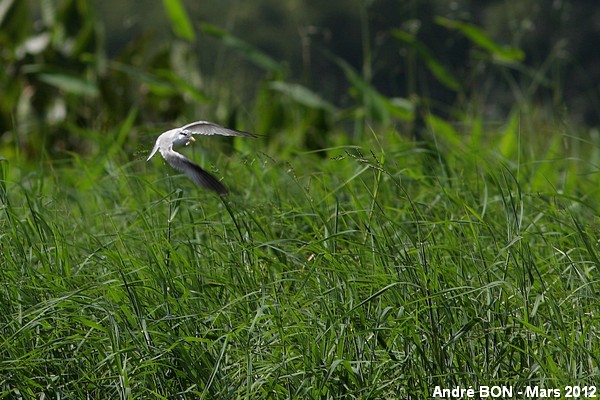

| Least Tern (Sternula antillarum (Lesson, 1847)) |


|
|
Scientific name: Sternula antillarum (Lesson, 1847) Common name: Least Tern Other names: Old scientific name: Sterna antillarum. French name: Petite sterne Order: Charadriiformes Family: Laridae Size: Body size: 22-24 cm; Weight: 39-52 g; Wingspan: 50 cm. Habitat: Beaches, dunes, gravel beds, islands, open areas bordering water and with sparse vegetation. Food: Small fishes and aquatic invertebrates caught by diving into shallow water. Nesting: Least terns nest in colonies. The nest is a simple depression on the ground. There are generally two eggs per clutch, sometimes three. Migration: Least Terns winter on the south coast of Central America, in the Caribbean and on the north Atlantic coast of South America, including the northern half of the coasts of Brazil. Geographic area: Least Terns nest on the Atlantic and Pacific coasts of Mexico and of the United States, on the river banks of central North America and in the Greater Antilles. |
The Least Tern has a uniform pale grey upper side, the underside is white. The head is white and bears a black mark on the upper side and a broad black band across the eyes up to the base of the bill. So there is a remaining small white patch on the forehead. The black mark on the upper side of the head is less marked in winter and so the white patch on the forehead becomes larger. The bill is yellow with a black tip in summer, it is blackish in winter. The legs are yellowish. The little Tern (Sternula albifrons) , which is found in Europe, Asia and Africa, has a white rump. The Yellow-billed Tern (Sternula superciliaris), which is found in South America, has no black tip on its bill and the upper side of the body is slightly darker. The Peruvian Tern (Sternula lorata), which is found in Ecuador, Peru and northern Chile, is slightly greyish on the underside. The black area at the tip of the bill is larger than on the Least Tern. |
| [To know more about the Least Tern] [Next picture] [Top] |

|
The boat tour on the Marshes of Caw starts with a short stop in the village of Caw. I have seen these Least terns on a roof at the entrance of the channel leading to the landing stage. This is not an excellent picture but you can see the pale grey upper side and black bill tip. We are here in the wintering area of this species. |
| [To know more about the Least Tern] [Previous picture] [Top] |

|
Once we were back navigating on the marshes we have seen a few Least Terns diving to fish. I have tried to shoot pictures of Terns in flight but I have not been able to do better than that. |